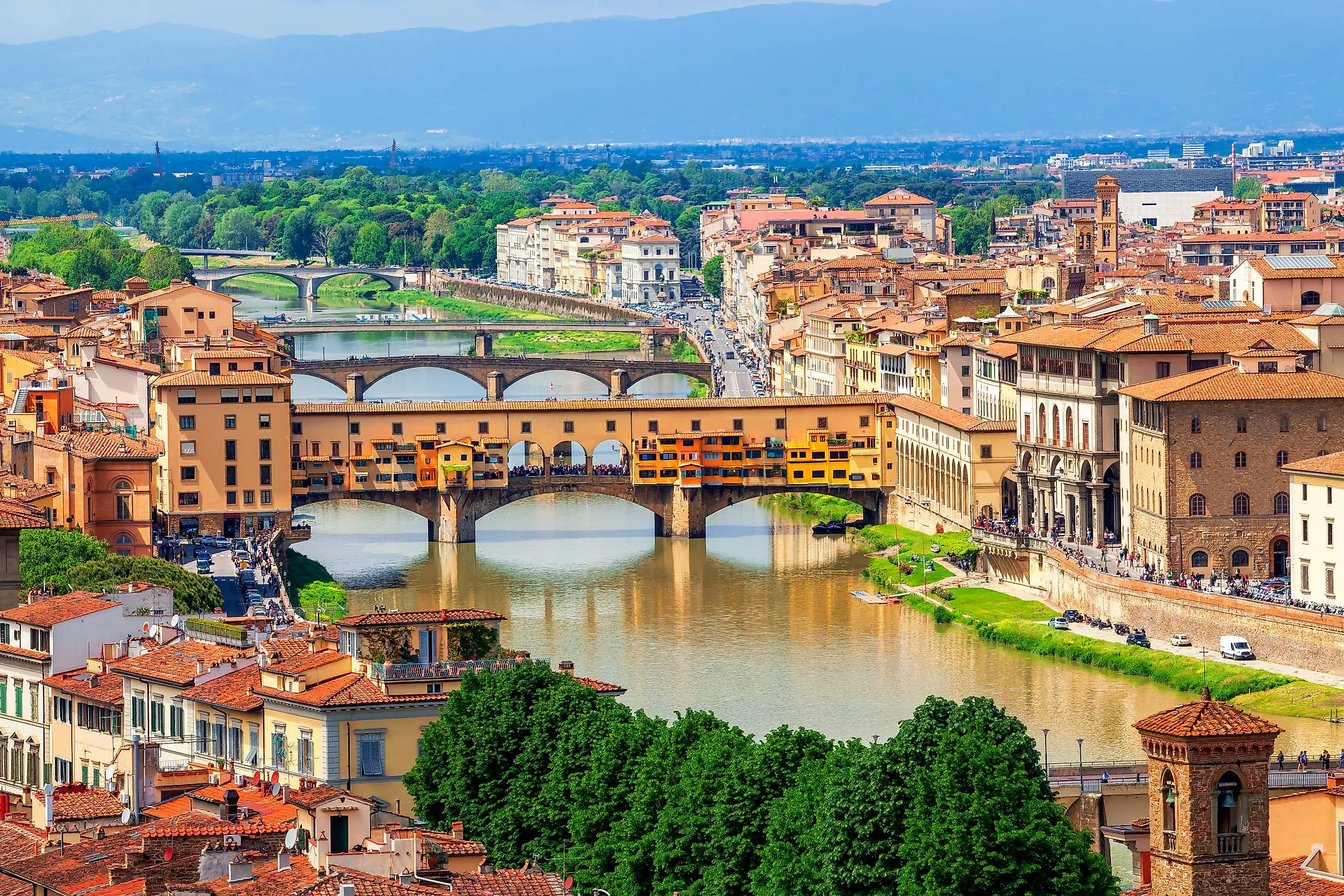
Arno River
The Arno river is the most important river in central Italy after the Tiber. It is 150 miles long, flowing through Florence, Pisa, and Empoli. Many people in Florence depend on the Arno river's water for drinking, irrigation, and firefighting. The many bridges lining the river are an attraction for tourists. However, the river's beauty can fool people into ignoring its danger. Throughout history, the Arno caused many floods, including the great flood of Florence in 1966.
Geography
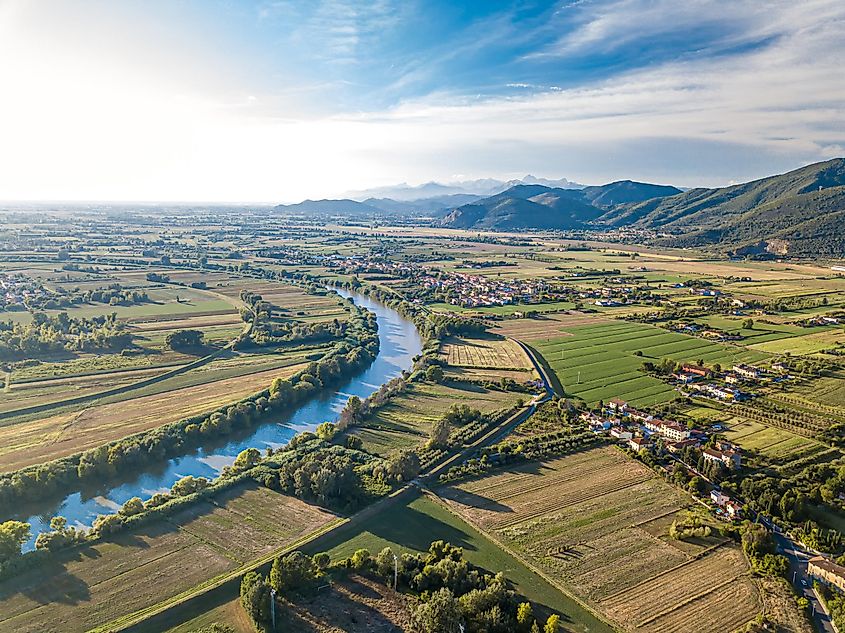
The Arno river, nestled within the Tuscan region, begins at Mount Falterona in the Tuscan Apennines, flowing south through the former lake basin, Casentino. The river continues flowing west at Arezzo. The Valdarno Valley is in the middle of the river's course. After, the river flows through a gorge called Golfolina, passing Empoli and Pisa as it heads west towards the Ligurian Sea.
Many tributaries flow into the Arno River, including Sieve at 37 miles, Bisenzio at 30 miles, Ombrone Pistoiese at 29 miles, and the Era, Elsa, Pesa, and Pescia. The Arno runs for 150 miles in total, flowing through Florence, Pisa, and Empoli. The river's drainage basin covers 3,184 square miles, and the flow rate is irregular. One day the river can be dry, and the next, it can be flooding. Today the river has a different course due to human interference.
Human Impact
People altered parts of the river, partly for better river management. For example, the Tuscan government added flood controls to the river's midsection. Humans have also impacted the Arno River's ecology. In Florence, over 90% of fish species and 70% of macroinvertebrate species are nonnative species. Besides its geographical importance, the Arno River has been important in Italy for developing trade and economic activity in Florence's history.
In the past, butchers had businesses along the Ponte Vecchio bridge, where vendors sell souvenirs today. The butchers used to throw animal carcasses into the river to discard them. However, the Medici family, a powerful banking and political family, removed the butchers, replacing them with vendors along the bridge. Today, numerous restaurants and cafes line the river, and the Ponte Vecchio bridge still stands.
Bridges
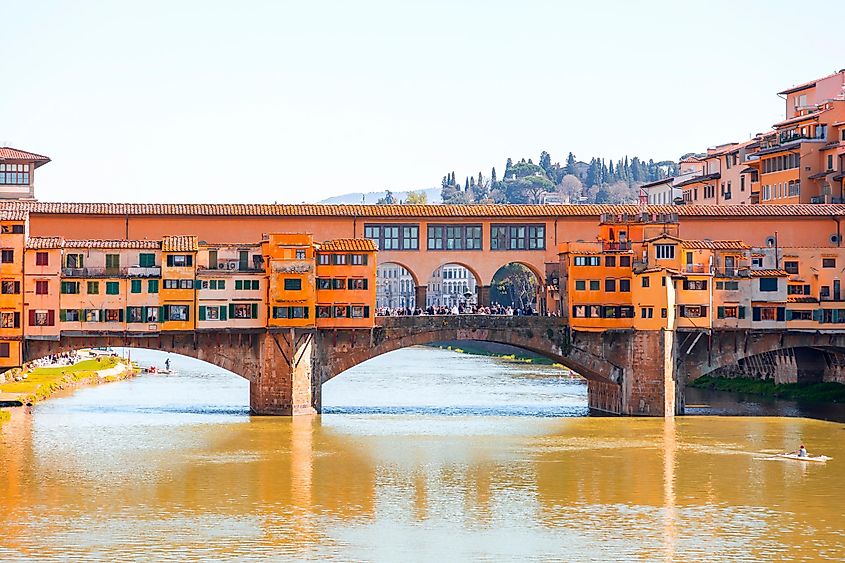
The Arno river's oldest and most famous bridge is the Ponte Vecchio (or Old Bridge). The Ponte Vecchio crosses the river from the north bank to the south bank. Both the north and south banks are different districts. The north bank is the Signoria District, and the south bank is the Oltarno district. The bridge has remained intact in Florence since 1345 and even survived the World War II bombing attacks, making it an important part of the city's cultural landscape. Other bridges over the Arno River include the Ponte delle Grazie, Ponte Santa Trinita, Ponte Alla Carraiat, and Ponte Amerigo Vespucci.
Disaster
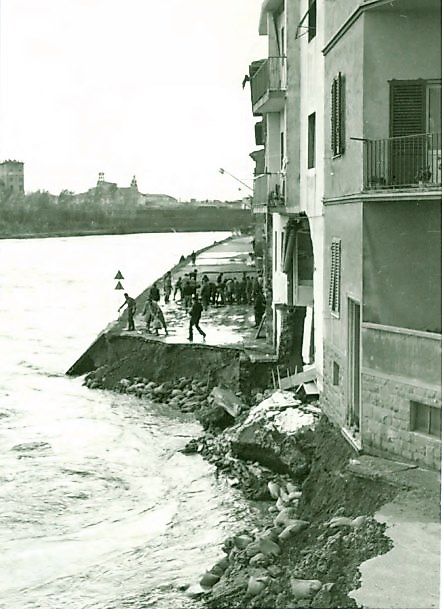
Besides its beauty in bridges, the Arno River is known for the disasters it has caused in the city of Florence. The river flooded multiple times throughout history, including 1177, 1333, 1557, and 1740. However, the flood of 1966 was by far one of the worst the city had seen. On November 4, 1966, after days of rainfall, the river overflowed. The river washed over the streets, flooding several homes and other buildings.
After the Arno River crested around noon, the water moved at a speed of 145,000 cubic feet per second. For the preceding six hours, the water speed slowed down to 106,000 cubic feet per second. However, the river itself could only handle 77,000 cubic feet per second. This meant the extra 30,000 cubic feet flooded Florence, equating to 225,000 gallons of water entering the city every second.
Although the water levels started to decline that evening, the damage was done. There were 30 human deaths related to the flood, and another 2000 people were left homeless. Many rare books and artworks were also destroyed. People from across Italy and the globe came to help with relief efforts for the people in Florence.
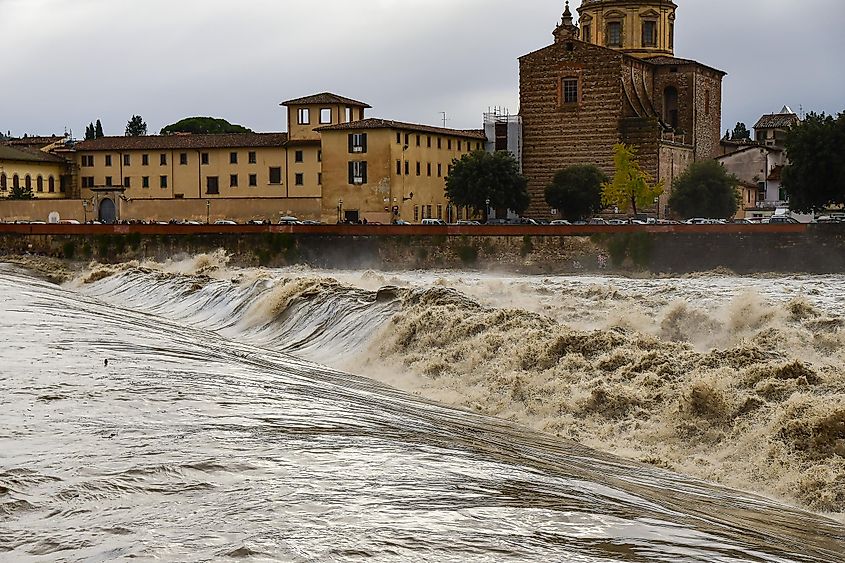
The disaster from the flooding of the Arno River in 1966 shows the power and importance of rivers. Throughout history, people have relied on rivers, such as the Arno river, for drinking water, travel, and trade. The Arno River has also drawn tourists to visit its many bridges. Farmers also use the Arno river for irrigation. Since people depend on rivers to meet certain needs, river management is important. River management considers the needs of everyone who depends on rivers. Since the 1966 flooding disaster of the Arno River, the government in Tuscany has taken environmental measures to manage the river better. These have included funding the construction of the Bilancino Dam and tributaries to prevent future flooding.











